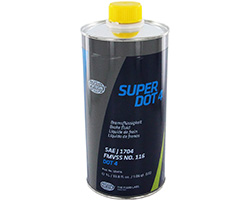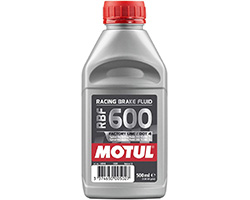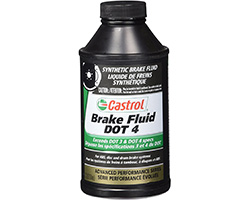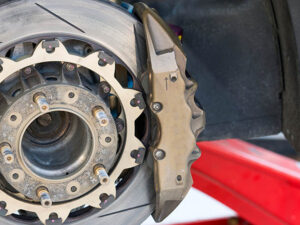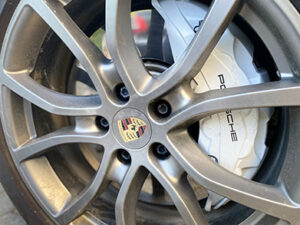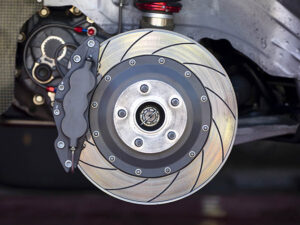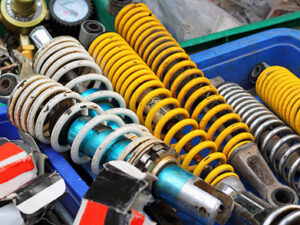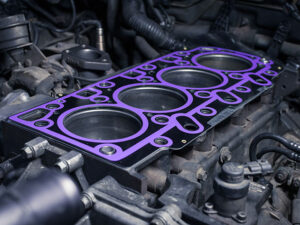Home \ Shop \ Engine & Efficiency \ Brake Fluids
The 10 Best Brake Fluids in 2025: Review and Buyer’s Guide
The best brake fluids for any kind of vehicle: from general-purpose cars to special cars & automotive technics
- 1. PENTOSIN 1204116 Super Dot 4 Brake Fluid
- 2. MOTUL RBF600 DOT4 Synthetic Racing Brake Fluid
- 3. CASTROL 12509 DOT 4 Brake Fluid
- 4. LUCAS OIL 10826 Brake Fluid
- 5. MOTOR MEDIC M4011/12 DOT 5 Brake Fluid
- 6. BOSCH ESI6-32N Brake Fluid (Universal)
- 7. ATE 706202 Racing DOT 4 Brake Fluid
- 8. RED LINE 90402 Rl-600 DOT 4 Brake Fluid
- 9. MAG1 120 DOT 3 Brake Fluid
- 10. VALVOLINE 601458 Brake Fluid (DOT 3/4)
- 11. The Best Brake Fluid Buyer’s Guide
- 12. What is the Brake Fluid?
- 13. Why is Brake Fluid Important?
- 14. Types of the Best Brake Fluids
- 15. What to Consider When Choosing Best Brake Fluid
- 16. Why Change Brake Fluid?
- 17. How Does Brake Fluid Work?
- 18. How Do I Check Brake Fluid?
- 19. What is the Difference Between DOT 3 and DOT 4 Brake Fluids?
- 20. How Often Should I Change My Brake Fluid?
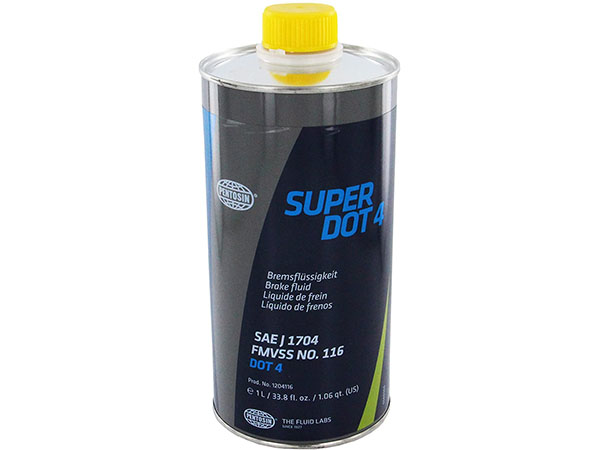
PROS
- Good for use on brake systems with ABS
- No draining or replacing required for a long time
- Excellent corrosion resistance
- No vapor lock risk
- Cost-effective brake fluid
CONS
- No significant downsides
When it comes to modern vehicles with ABS system, this product is definitely the best pick. Being an upgrade in boiling point to Dot 3, the Dot 4 type of brake fluid is gradually gaining ground as a result of the increase in the use of anti-lock braking systems and traction control in more vehicles. It is hygroscopic, that is, it absorbs water, slightly alkaline and comes in clear yellow color. The boiling point of this product is one that ensures the safety of your engine by preventing continuous vapor lock. If you are considering making use of this product, here’s a list of.
The benefits for you and your car, that we have discovered:
- Perfect boiling point to guarantee an efficient braking system to withstand considerable heat, without leading to a vapor lock.
- The lower viscosity of type Dot 4 brake oil ensures smoother cycling of the ABS system and provides a different cold temperature brake feel.
The following are the disadvantages associated with this product:
- Its hygroscopic nature. Because this fluid absorbs moisture, it could cause rust of the metal parts of the brake system that it ought to have protected in the first place. Fortunately, this problem can be salvaged by good, occasional preventive maintenance.
- When a painted surface is in direct contact with this brake fluid, such surface would be damaged. Therefore, utmost care must be taken when handling this product around one’s vehicle, to avoid damaging the Vehicle’s body.
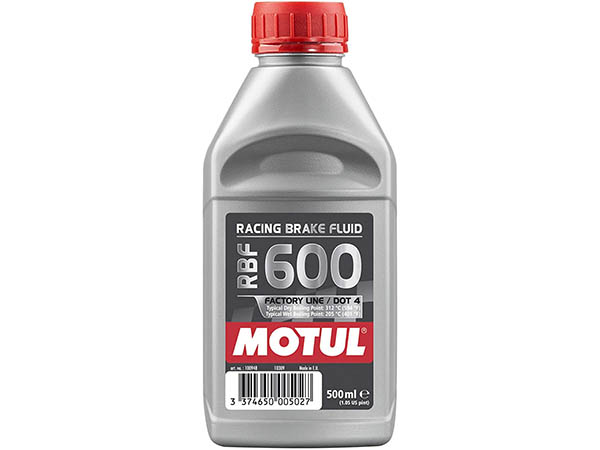
PROS
- Extreme thermal stability
- Suitable to use even in motorsport
- Has one of the highest boiling point
- Solid corrosion resistance
CONS
- Relatively low quantity, only 500ml.
Having been in existence for over a century, the Motul brand has built a name for itself, and its products have over time come to the point of being associated with credibility, quality and efficiency. This product comes as a non-silicone fluid, hygroscopic, that is, it absorbs moisture, it has a very high boiling point to also reduce vapor lock, low rate of oil consumption, and it serves as a perfect friction modifier. It should be noted that although this fluid can also be used on any vehicle, it is best used for racing vehicles. The higher boiling point of this fluid increases the performance of such vehicles by giving them better brake operation when things get heated up (which is frequently).
The benefits for you and your car, that we have discovered:
- Low volatility reduces the formation of vapor while ensuring an efficient braking system
- Reduction in possible engine wears.
- It maintains a stable oil pressure irrespective of its working conditions.
The following are the disadvantages associated with this product:
- Because it is hygroscopic, it will absorb moisture from the atmosphere, which could lead to rusting of the metal parts.
- It requires a more frequent change, as a result of the rate at which it absorbs moisture.
- It would also damage the paint of the vehicle if it comes in contact with any vehicle body part.
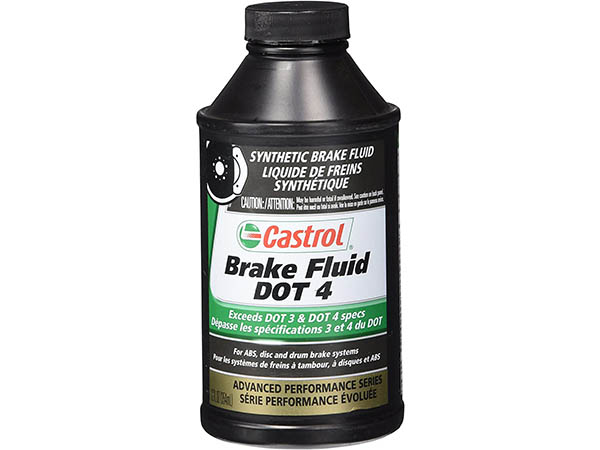
PROS
- Good for modern brake systems
- ABS-systems support
- Can be used for mixing with other conventional braking liquids
- Not too expensive product
CONS
- Small package: 12 OZ / 354 ml.
When a reputable brand like Castrol puts out a product for sale, it sure is a credible product, and the Castrol 12509 is not an exception. This product has been skillfully manufactured in a way that, does not only ensure that your vehicle stops when you want it to, but the protection of the brake system of your vehicle is guaranteed. The compatibility of this fluid is commendable as it is suitable for most US and foreign vehicles. In making use of this fluid, the optimum braking response is assured. Alongside, there is the protection of your vehicle’s internal components from the wheel cylinders to the ABS system generally.
Another interesting fact about this product is that unlike some other fluids that cannot be mixed with or used alongside other brake fluids, the Castrol 12509 maintains compatibility with other conventional brake fluids. This fluid has a high boiling point as well as a Low Moisture Activity (LMA) formula. This makes it possible to prevent a continuous vapor lock in your vehicle, irrespective of the fluid’s hygroscopic nature. For everyone who wants an ultimate brake system performance, especially speed lovers, this fluid is highly recommended and it comes at a very affordable price when compared to other Dot 4 fluids. However, its user would have to deal with the fact that this product is available in a low volume.
The benefits for you and your car, that we have discovered:
1. Can be mixed with or added to other conventional brake fluids, so if you are using DOT 4 standard liquid now – this is a good choice having a bottle of Castrol 12509 in your garage.
2. As for this DOT 4 fluid – it comes at a very good price.
3. This DOT 4 liquid can perform a good brake system operating along with the strong protection of its internal components.
The following are the disadvantages associated with this product:
1. This liquid is packed in 12 OZ (354ml) bottles that aren’t too much comparing to another essential product on our list.
2. Also with the other DOT 4 liquids can be harmful to the brake system after years of use. We recommend draining and replace it every 20,000 miles.
3. You should be careful when picking and perform operations with every kind of DOT 4 liquids and know that it is toxic. You should check what is “Proposition 65 Warning” in California. But even if you aren’t from here, you must also check these permissions.
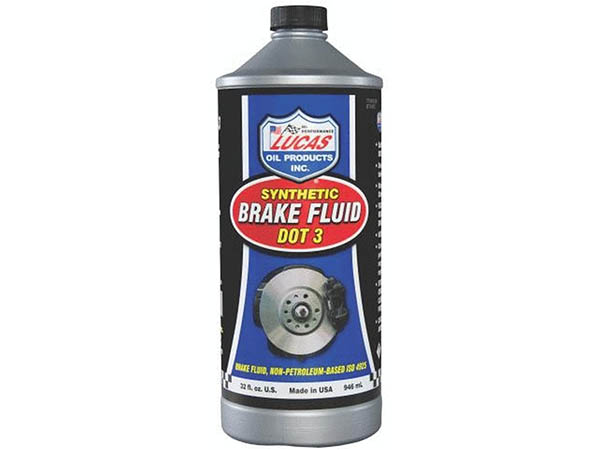
PROS
- Ok to mix it with another DOT 3/4
- Prevent possible fluid leakages
- Great for a quiet ride
- Good price for the volume of 32 OZ
CONS
- Not good for racing and/or high-performance brake systems
This product is a unique make of a Dot 3 brake fluid. It defies the regular silicone-based fluids. Rather, the Lucas Oil 10826 contains polyethylene glycol ethers and certain additives. The protection of rubber components in the brake system is guaranteed with this feature in place. In the long run, this has a positive effect, which is a reduction in fluid leakages.
Not only is this product suitable for the disc brake systems, but it also prides itself on its compatibility with the drum brake system and even a clutch system, as the case may be. Interestingly, this fluid can be mixed with other brake fluids without causing any harm to your vehicle. Thus, you need not completely flush out your old fluid, when it is time to change your brake fluid. This product perfectly harmonizes efficiency with versatility.
Although this product comes with a number of benefits, it also has a couple of disadvantages with the foremost being its feature as a Dot 3 fluid. The result is that it has a lower boiling point than a Dot 4 brake fluid. Therefore, it is more susceptible to absorbing more moisture and causing rust of metal parts, than a Dot 4 fluid.
If your vehicle is one to be used in a manner that demands less aggressive braking actions, then this item is very suitable for your vehicle. Also, when compared with the price of a Dot 4 fluid, it is cheaper.
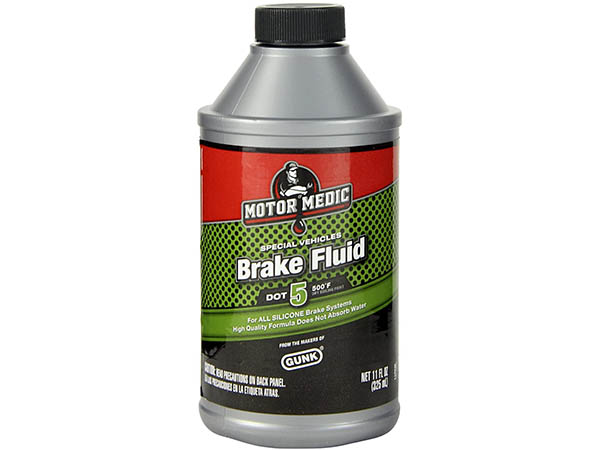
PROS
- Very good for racing and rallying
- No harm to painted surfaces
- No change required for a long time
- Very careful for brake system components
CONS
- Suitable for silicone-based brake systems only
- Can't be mixed with DOT 3/4
- 11 OZ / 325 ml package is quite small
When compared to Dot 3 and Dot 4 type of fluid, the Niteo Motor Medic M4011 is a commendable upgrade. It comes with a very high boiling point feature, and unlike other fluids, it does not absorb moisture. That is, it is not hygroscopic. Rather, it is hydrophobic. This is an amazing feature of this fluid because this guarantees the protection of metal parts of the brake system from rust. Apart from this, this fluid is also painted friendly. In other words, it doesn’t damage painted surfaces and the body of your vehicle would remain the same even if it comes in contact with this fluid. This product is also made to be a good fit for disc or drum brake vehicles. The level of the boiling point of this fluid makes it possible to guarantee maximum brake system operation, in both extremely high and extremely low temperatures.
However, one of the downsides to the use of this product is the fact that it is incompatible with a Dot 3 or Dot 4 fluid. Hence, if you ever have to change the fluid from either Dot 3 or Dot 4 to a Dot 5 fluid, or vice versa, it requires a thorough process, of flushing the hygroscopic fluid from the brake system. Also, if you are contemplating using this product on a vehicle with an anti-lock braking system, then this would not be a good choice, as they are incompatible.
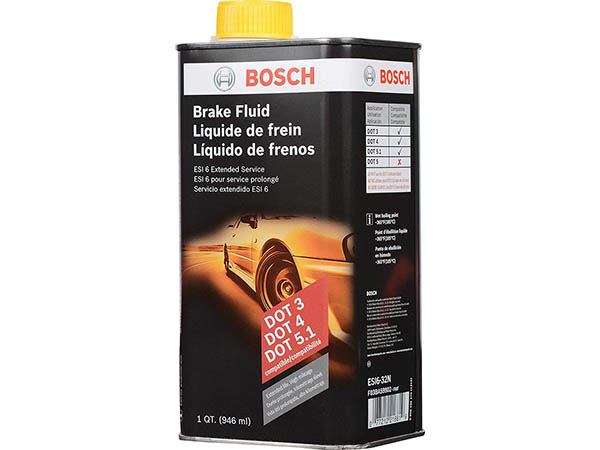
PROS
- Can be mixed with DOT 3/4/5.1
- Suitable to use over 3 years
- Contributes soft braking due to a low viscosity
- High performance brake fluid
CONS
- No significant downsides
This product has to be one of the best things to happen to the brake fluid market. It perfectly combines features that make it useable by almost all range of modern vehicles while guaranteeing a high level of performance. It simultaneously blends a very high wet boiling point and a low level of viscosity in a bottle.
The benefits for you and your car, that we have discovered
1. High boiling point. The high level of the wet boiling point makes this fluid suitable for intense temperature. It lowers the risk of a vapor lock occurs. This ultimately protects the brake system from failing.
2. Versatility. This fluid can be used not only with DOT 3 but also DOT 4 and in fact DOT 5.1 kinds of brake fluid. Thus, it can serve as a direct replacement with any of these or can be used directly with them. No thorough flushing of the brake system is required when the need to change the brake fluid arises.
3. Long term use. It can be used for a period of 3 years without change and still maintain a high level of performance. This is a long term use when compared to the recommended 2 years life span of other regular brake fluids.
Although this product seems to be all-around perfect, a major area of concern is its health implication. One could get exposed to certain chemicals like Ethylene Oxide, from the use of this product. This chemical has been associated with causing cancer and birth defects. Hence, the use of this fluid demands maximum caution by its user.
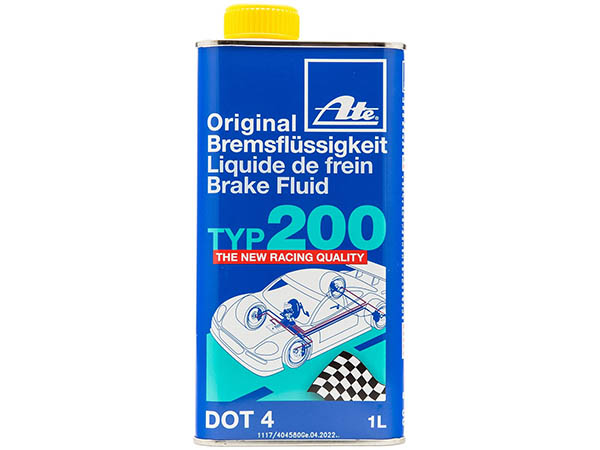
PROS
- Reliable due to excellent water locking properties and good additives
- Up to 3 years change intevals
- Excellent for Racing and Rallying
- High safety features
CONS
- No significant downsides
This is a 1-liter volume of brake fluid that was specifically made to meet the needs of your racing car. It has a wet boiling point of 190 degrees centigrade and a dry boiling point of 280 degrees centigrade. Being a DOT 4 brake fluid, it provides a higher level of moisture resistance when compared to a DOT 3 brake fluid, with a better system operation.
The benefits for you and your car, that we have discovered:
1. Compatibility. This fluid is compatible with vehicles with anti-lock braking systems (ABS). And these vehicles are gradually becoming the new normal. Hence, this oil would make a good fit for an average vehicle.
2. Braking operation. As a result of its high level of boiling point, this product prevents the formation of bubbles in the system. Thus, it is suitable for racing cars or vehicles that engage in aggressive braking actions. This will prevent the braking system from overheating and guarantee a quick brake response.
3. Rust protection. Apart from these, this fluid contains certain additives that protect the metal parts of the braking system and prevents these parts from rusting.
The following are the disadvantages associated with this product:
The disadvantages that accompany the use of this fluid are that although this fluid is high temperature ready, it does not work so well in wet conditions as a result of the level of its drying point. Also, there is a need to exercise caution in order not to spill the fluid on the body of the vehicle. This is because the contact of the fluid with a painted surface would lead to corrosion of such surface. Apart from these, this product is definitely a good pick.
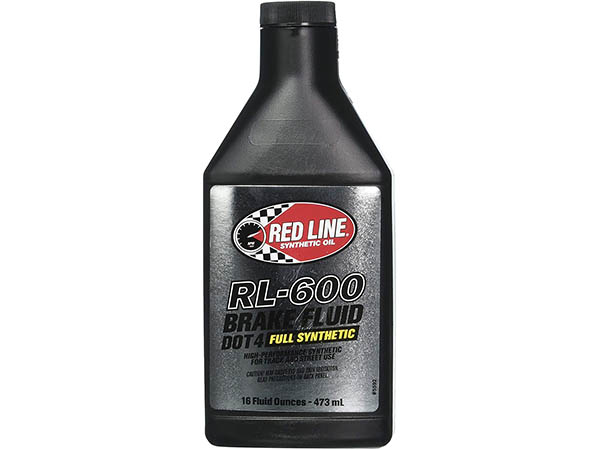
PROS
- Derives DOT 4 benefits and features
- For street and track use
- Perfect characteristics
- The brand related to motorsport
CONS
- Small package 16 OZ / 463 ml.
Not only does this item pride in being a product of a brand that has built a remarkable reputation over time. It also prides itself on its versatility feature. This fluid is suitable for racing vehicles as well as a regular car. Apart from this, this fluid also provides maximum braking operations both in dry and wet conditions. Furthermore, it is compatible with almost every brake system obtained in many modern vehicles. This level of versatility has no doubts, created a niche for this product and made it distinct from every other product in the brake fluid market.
Unlike regular fluids, the Red Line 90402 prevents the braking system from overheating even in high-temperature operations. In the long run, this protects the system against vapor lock and brake fade. The relevance and suitability of the oil for racing cars also guarantee that the oil ensures a quick response braking system. Not only is this fluid excellent for racing cars, but it is also a good choice for trucks or vehicles with powerful brake pads.
Although these benefits are top-notch, it does not come without its price. In the fluid market, when compared to other products, this item is expensive for brake fluid. However, if a user does not mind its cost, he would definitely enjoy its use. Also, although it is largely versatile, it might not be the best fit for regular non-racing cars, or vehicles that do not undergo aggressive brake actions.
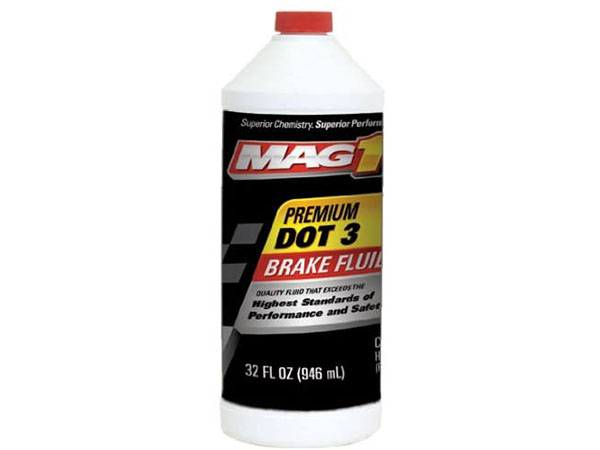
PROS
- Premium DOT 3 brake fluid
- For street use
- Good for general-purpose cars
CONS
- Not designed for high-temperature systems
Though a DOT 3 brake fluid, it is a product of a reputable brand that has also been in existence for a long period of time. This fluid provides an extra margin of safety to meet the required standards of FMVSS.
This item finds its compatibility with just regular cars, with little or no vigorous braking operations. Also, it does not perform well under high temperatures. As a result of these features, this fluid would unsuitable for racing cars or trucks. There is also a restriction as to the fluid’s compatibility with other fluids. Although a Dot 4 can be used in its replacement, it cannot replace a DOT 4 fluid. Generally, this fluid is not a versatile one.
This fluid is a very basic one but will maintain a good performance only when it is paired with a small lower-performance vehicle. Its affordability is also something to take note of.
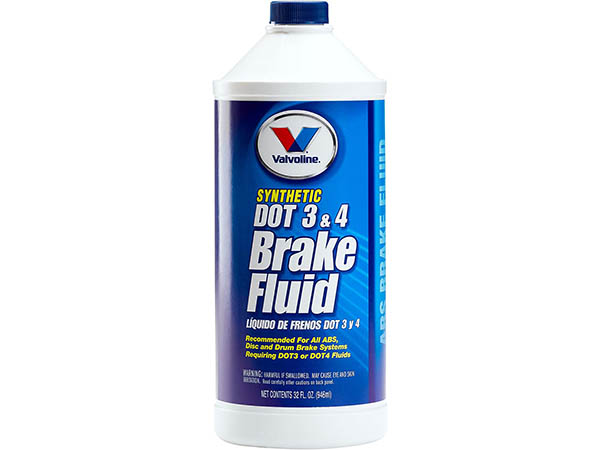
PROS
- Premium DOT 3 & 4 brake fluid
- For street and track use
- Can be mixed with DOT 3/4 brake fluids
CONS
- No significant downsides
This is a hygroscopic DOT 3 and DOT 4 fully synthetic product. It has a high boiling point which makes it suitable for very hot temperatures. It reduces the possibilities of a brake failure as a result of vapor lock and it also guarantees a high ABS performance. This product is compatible and suitable for use for a disc brake system. Also, it is compatible with all other DOT 3 and Dot 4 fluids. As such, no rigorous flushing is required when there is a need for fluid replacement, as long as it is not a DOT 5 fluid.
Although this is a high-performance fluid, its nature as a hygroscopic makes it absorb moisture. This would cause corrosion of the metal parts in the brake system over time.
The Best Brake Fluid Buyer’s Guide
In this guide, we’ll cover everything you need to know about brake fluid. We’ll cover what it is, why your car needs it, the different types of brake fluid, and more. This is a simple maintenance item that can improve the performance and safety of your car with just a little bit of attention.
What is the Brake Fluid?
Brake fluid is a hydraulic fluid that is required to make modern brake systems work. When you depress your brake pedal with your foot, you’re creating pressure in the brake system which pushed brake fluid into the actual brakes on the wheels in order to activate them. In the case of disc brakes, brake fluid goes into the calipers and squeezes brake rotors with brake pads to slow down the car. In the case of drum brakes, the brake fluid pushes brake pads inside of the drum to create friction slowing down the wheels.
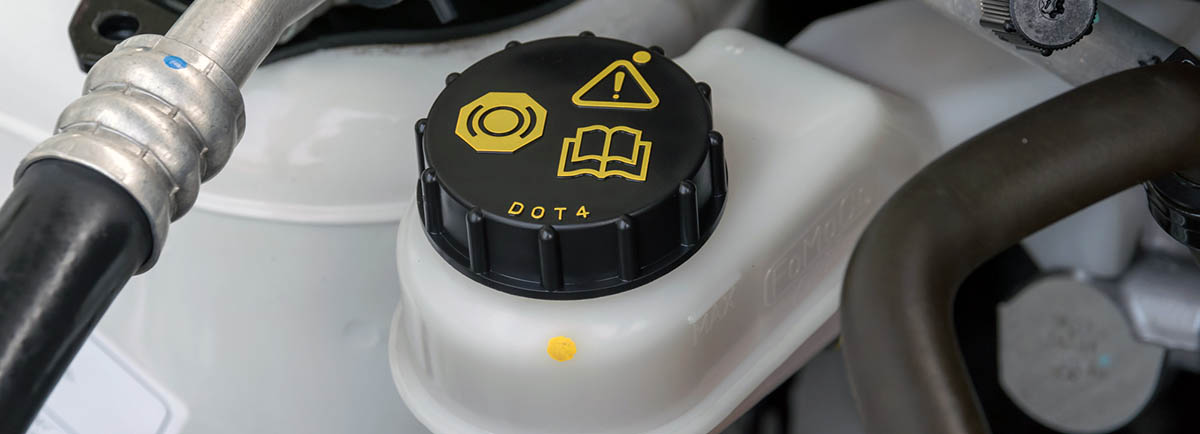
Why is Brake Fluid Important?
Brake fluid is important because brake systems are hydraulic and require fluid to work properly. If you had no fluid in your brake system, your brake pedal would flop on the floor and nothing would happen when you try to depress it with your foot because there would be no fluid going to the brakes to activate them. Brake fluid is pushed into your brakes which turn the kinetic energy of your moving wheels into heat energy. That energy transfer is what slows down and eventually stops the car.
NOTE: Any type of brake fluids are toxic for humans, so it’s better to operate with them carefully. Another drawback is DOT 3 & 4 aggression against car paint. Try not to spill or splash brake fluid on the car paint.
This makes brake fluid an essential part of keeping your car safe. If you have a brake fluid leak (which may seem like coolant leakage quite often), if the fluid isn’t going where it’s supposed to go, or if the brake fluid gets too old (there is importance in brake fluid replacement and its visual control), then you could have a serious safety issue on your hands.
Types of the Best Brake Fluids
There are a few different types of brake fluid for different types of vehicles and applications. For example, a racecar is going to use a different type of brake fluid than a minivan because the brakes are used differently.
- DOT 3 brake fluid is the most common type of brake fluid used in regular cars. If you’re not sure what kind of brake fluid your car uses, it’s probably DOT 3, but you should still check your owner’s manual to confirm.
- DOT 4 is very similar to DOT 3 but uses additives to raise the boiling points making it good for higher-performance applications.
- DOT 5 is a special silicone-based brake fluid that doesn’t attract water and has higher minimum boiling points than DOT 4. DOT 5 fluid is rarely used and cannot be mixed with any other type of brake fluid. It’s very expensive and should only be used if your vehicle specifically requires it.
- DOT 5.1 brake fluid is more chemically similar to DOT 3 and DOT 4, but uses the higher minimum boiling points that DOT 5 uses. DOT 5.1 is not necessarily better than DOT 4, but some vehicles require the lower viscosity of DOT 5.1.
As for which brand of brake fluid to buy, trusted names like Prestone and Valvoline are safe bets for getting a quality product at a good value. Really, any brake fluid you find at your local auto parts store will do and there isn’t a big difference between competing brands of brake fluid.
What to Consider When Choosing Best Brake Fluid
The surest and easiest way to know which brake fluid to use in your vehicle is to check the owner’s manual. The manual will tell you what type of brake fluid is recommended (it will usually be DOT 3) and will make a recommendation on which specific brand to use. Using your manufacturer’s recommended brand of brake fluid isn’t as important as you might think. You can use brake fluid from any brand and it won’t void your warranty or cause any problems as long as you use the correct type of brake fluid.
Although brake fluid is an extremely important fluid to keep your car operating properly and safely, you really don’t need to get fancy with it. It’s not like motor oil, where a more premium synthetic blend is going to yield benefits to performance and extend engine life. At the end of the day, brake fluid is brake fluid and you don’t have to spend a fortune on some special formula to get the best performance out of your brakes. Again, the most important thing is that you’re using the correct type of brake fluid for your car and avoiding blending different types of fluid.
FAQs:
Why Change Brake Fluid?
Brake fluid needs to be changed regularly for the brakes of the car to continue working properly. Having bad brake fluid in your system can not only make your brakes less effective, but it can damage some of the internal parts of your brake system which would lead to expensive repairs. It’s much more cost-effective to have your brake fluid changed regularly.
Brake fluid does have a longer lifespan than other important fluid in your car like motor oil, but you can’t just leave the same brake fluid in your car for its whole life. Brake fluid can be contaminated by factors like moisture in the air and road salt which is why it’s especially important for drivers who live in high-humidity areas or in snowy climates to have their brake fluid inspected by a professional regularly.
How Does Brake Fluid Work?
When you push down on your brake pedal, it creates pressure in the master cylinder of your brake system. The master cylinder is what sends the brake fluid in your hydraulic brake system to the actual brakes to activate them. If your car has disc brakes, pressurized brake fluid fills the calipers which pinch the rotors of the brakes with brake pads that convert kinetic energy into heat energy which is what slows down the wheels. If your car uses drum brakes, the pressurized brake fluid pushes on the brake pads inside the drums and uses the same basic principle of converting kinetic energy into heat energy to slow down the car. Some cars use a combination of disc and drum brakes which share the same brake fluid in your brake system.
Now that you know how brake fluid works, it’s easy to see why it’s so important. If your hydraulic brake system has no fluid to do the work, then nothing would happen when you depress your brake pedal and you wouldn’t be able to slow down or stop your car.
How Do I Check Brake Fluid?
You can check your brake fluid by simply checking the brake fluid reservoir under the hood of your car. The caps on brake fluid reservoirs often have a little cartoony image of a drum brake and should say what kind of brake fluid is required on it like “DOT 3” or “DOT 4.” The reservoir should have lines on it that you can inspect to see if your brake fluid level is within the acceptable range. If your brake fluid looks low, top it off as soon as possible. If your brake fluid looks especially murky, then you should have it inspected by a professional to find out if it’s time to get the fluid changed.
What is the Difference Between DOT 3 and DOT 4 Brake Fluids?
DOT 3 and DOT 4 brake fluids are chemically similar but have some key differences. DOT 3 brake fluid is the most common type and has a minimum dry boiling point of 205 degrees Celcius. The wet boiling point is 140 C. The dry boiling point is the point where the brake fluid itself boils and the wet boiling point is where the fluid mixed with 3.7 percent water by volume boils. This accounts for moisture in the air getting into the brake fluid in your car. DOT 4 brake fluid has additives that raise the dry boiling point to 230 C and the wet boiling point to 155 C. Since DOT 4 can handle higher temperatures, it’s used in performance cars where the brakes can get hotter in high-performance driving. DOT 4 brake fluid needs to be changed more frequently than DOT 3.
How Often Should I Change My Brake Fluid?
How often your brake fluid needs to be changed depends on a few things. For the average car in average conditions running DOT 3 brake fluid, a safe interval is about every 45,000 miles or every three years regardless of mileage. Some more premium luxury cars recommend brake fluid changes more often, partially because they often use DOT 4 fluid. If your vehicle uses DOT 4 brake fluid, it would be safe to get a brake fluid change every 20,000 miles or every two years. If you can’t remember the last time you had your brake fluid changed or if you’ve never gotten it changed since you got the car, it might be time to have your brake fluid inspected by a professional to see if it’s time for fresh brake fluid.
We do an efforts to find, research and recommend the best products. So, we may receive commissions from purchases that you make after following the links in our product reviews.


